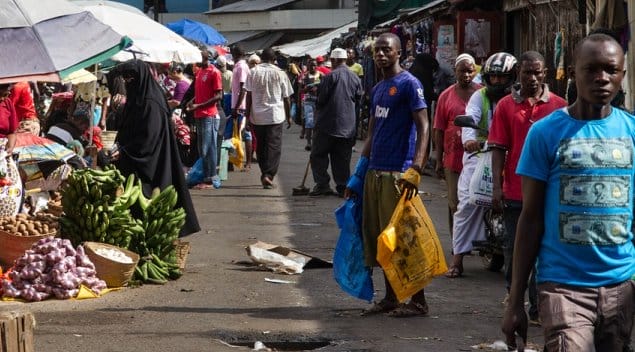Top style tips for Kenya
- Casual, comfortable clothes are the key when travelling in Kenya.
- During the day it is hot so our advice is to pack loose lightweight layers in natural fabrics such as linen, bamboo and cotton that will keep you cool and are easier to wash and dry.
- We suggest keeping to light, neutral colours, but not white – it will get dirty and dusty very quickly.
- Avoid blue or black clothing – the tsetse flies are drawn to these colours, and their bite can give you African Sleeping Sickness.
- It is very important to note that camouflage/military clothing or print is not permitted.
- Remember your sunglasses and lots of sunscreen (we love the Riemann P20 range for 10 hour protection), and of course insect/mosquito repellent is really important.
- And don't forget a wide-brimmed safari hat to protect your face and neck.
- When you are on safari, the idea is to relax and enjoy your time under the African sky, and listen to the calls of the wild all around you! Dinner dress is therefore casual and comfortable.
- Long trousers and long-sleeved tops are best, to protect you from the harsh sun by day and mosquitoes at night.
- Nighttime and early morning game drives can be cold, so pack a warm hat, scarf, gloves and a fleece or jacket. You could try the SCOTTeVEST travel jacket because it has removable sleeves for warmer weather and allows you to carry your valuables with 23 secure internal pockets.
- If you are visiting the beaches pack your swimwear, but keep it strictly to the beach or pool area and cover up with a t-shirt or kaftan when walking around. You'll cause offence otherwise.
Shoes to pack for Kenya
- Take comfy practical footwear for daytime – the roads are dusty and uneven – and for trekking in the bush make sure you have sturdy, closed-in walking shoes or trainers. Try Hotter shoes, they are amazingly light and comfortable.
- We love Thorlos hiking socks too, they keep your feet dry and comfortable in all climates.
- Avoid going barefoot on beaches in Kenya; chigoe fleas can dig into your feet and cause boils and sores. You may like to wear dive shoes to protect your feet, and from the sea urchins too.
Clothing tips for women
- In Muslim areas including the coast, shorts and t-shirts can be frowned upon. Away from the tourist hotels and beaches, our advice is to wear trousers, or a knee length or longer skirt, and tops which cover your shoulders.
- Leave your valuables and expensive jewellery at home, you really won't need them.
- If you're dressing for dinner in the beach resorts, a few simple pieces of costume jewellery will dress up an outfit.
- A pashmina or sarong is a versatile item that you can use for sun protection or to ‘glam' up the simplest of outfits if you feel like a change.
Clothing tips for men
- When exploring Muslim areas including the coast, long trousers are a good idea.
- Evening dress codes in the beach hotels are likely to be ‘smart casual' – so long trousers with a shirt. On safari you'll want long trousers too, to protect from mosquitoes.
- If you're looking for versatile and stylish beachwear, try the Madda Fella range of shirts, shorts, polos and swimwear.
Pack for the weather
- If you plan to visit between March, April and May or October, November and December, prepare for afternoon rainstorms by taking a light raincoat.
- We love the Weather+ app – it gives an accurate 6 day forecast for day and night, which when you're planning from home is really helpful. You can keep all the places you've been to too – a nice way to remember your trip 🙂 Download for iPad/iPhone or Android
Regions of Kenya
- It does cool off at night – especially in Nairobi and the Highlands in July and August – so pack a pashmina, fleece or jumper.
- The mountains will be cooler because of the altitude so pack warmer layers and a waterproof jacket for this terrain. light wool is a good choice to wear against your skin as it naturally helps to regulate your body temperature. It keeps you warm in the cold, wicks away moisture when it's hot, and doesn't retain odours – even after prolonged wear.
Other things to pack
- A soft-sided rucksack is more practical than a hard suitcase for safari holidays – it's easier to fit into the small planes or transfer vehicles. Using packing cubes can help to keep your belongings tidy whilst compressing the volume too.
- Internal flights often have much lower baggage limits than your international carrier. Use an accurate luggage scale to ensure you keep within the weight allowance.
- Combine your rucksack with a sling bag or lightweight day sack for sightseeing trips and game drives.
- You may like to carry a solar powered charger too, to boost your battery when out and about – you don't want to miss that great photo opportunity!
- To use electrical gadgets you may need a travel adapter plug, and also a step down voltage converter if your devices are not designed for the local voltage (240V).
- Don’t drink or even brush your teeth in tap water. Consider taking a LifeStraw Filtration Water Bottle.
- And don't forget to leave room for souvenirs on the way home! Look out for carvings, Maasai beaded jewellery or Kenyan coffee, to name a few.
Community photos from Kenya
